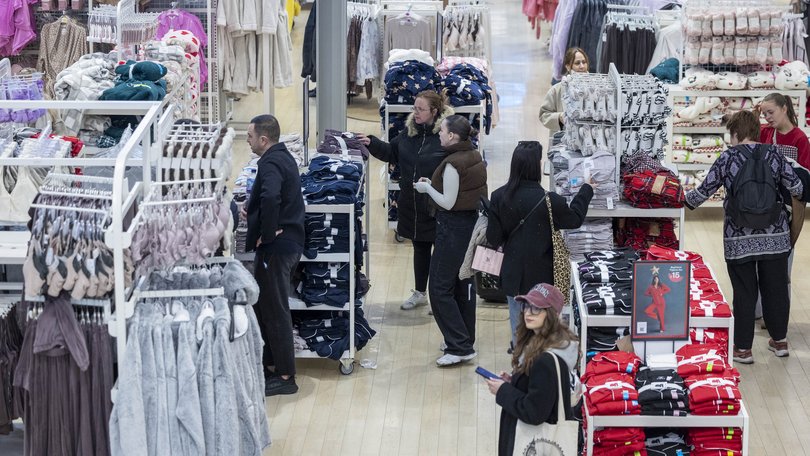THE WASHINGTON POST: Lifting the veil on fast fashion as big labels like Zara, H&M get green makeover

Zara has produced a line of clothes made from recycled fibres, as well as repair, resale and donation services. H&M is investing in offshore wind to help power garment manufacturers in Bangladesh.
Primark is testing its garments to better withstand daily wear and tear, and teaching customers how to make their clothes last longer.
There are enough of these sorts of announcements to make you wonder: Has fast fashion embraced sustainability?
Sign up to The Nightly's newsletters.
Get the first look at the digital newspaper, curated daily stories and breaking headlines delivered to your inbox.
By continuing you agree to our Terms and Privacy Policy.Or are these token efforts — perhaps designed to assuage any customer guilt that buying cheap clothes comes at the expense of the planet?
Industry experts say some of it is about brand reputation. Fast-fashion companies are trying to counter the criticism, especially resonant with younger shoppers, that their business model encourages overconsumption and waste.
But some companies also recognise the market opportunities and cost-saving benefits that can come with more sustainable practices.
Here’s a look at some of what fast-fashion brands are doing to be more sustainable, what may be motivating those efforts and how to avoid getting fooled by greenwashing.

The environmental impact of fast fashion
The detrimental impact of clothing production and the associated waste is well documented.
Producing textiles is typically a resource-intensive process that guzzles water while spewing greenhouse gases and pollution. Some estimates suggest that making one cotton T-shirt requires more than 700 gallons of fresh water. And the fashion industry is responsible for as much as 10 percent of the world’s carbon emissions - with an upward trajectory driven, in part, by fast fashion.
Clothes also often wind up in landfills. The Environmental Protection Agency reported that landfills received 11.3 million tons of textiles in 2018, amounting to more than 7 percent of municipal solid waste in the United States. The Ellen MacArthur Foundation calculates that globally, the equivalent of a garbage truck of clothes is burned or buried in landfills every second of every day.
Brands have made varying degrees of effort to address these issues. Of 42 fashion brands analyzed for Stand.earth’s most recent scorecard, 40 offered resale or repair, and 14 reported a sustained reduction of carbon emissions. But 17 had increased their carbon footprint in comparison to their baseline year, and few were doing much to encourage decarbonization along their supply chains.
A recent McKinsey report on the fashion industry similarly assessed that nearly two-thirds of brands are behind on their 2030 decarbonization goals, and many have recently deprioritized sustainability.
That may remain the case as the Trump administration pledges to roll back various environmental initiatives and US tariffs increase costs for companies. The European Union has also delayed certain sustainability reporting requirements.
But the McKinsey report concluded that climate change “will remain a potent force across fashion supply chains and in driving consumer behaviour.”
Brands that choose to adopt a long-term sustainability strategy “will be rewarded with more efficient business operations and a competitive advantage”.

The conscious consumer effect
Experts say sustainability is a factor that a broadening segment of shoppers appear to care about — to a point.
“There is this momentum toward sustainability and circularity in fashion, but it’s not really driven solely by regulation or niche consumer groups anymore,” said Katrina Caspelich, chief marketing officer for Remake, an advocacy group.
“It really is being accelerated by consumer demand, and that’s super exciting, because Gen Z and also younger millennials are really redefining what it means to be a conscious shopper.”
Some of these consumers are active on social media and are quick to call out brands for greenwashing or celebrate those that are following through on their sustainability efforts, Caspelich said.
“For fast fashion brands, that’s a little scary, because they’re facing real-time reputational risks if their sustainability claims don’t hold up,” she said.
If fast fashion brands are able to invest in sustainability while enhancing their products and keeping costs down, they could draw customers who otherwise might have hesitated to buy from them, said Kristen Classi-Zummo, an apparel expert with Circana, a Chicago-based market research firm.
“A consumer might feel better about that purchase,” Classi-Zummo said.
But Classi-Zummo and other experts said cost remains a chief concern for a majority of consumers.
“If consumers are looking at two items, same price, similar in style and one has some sustainability focus... and the other does not, consumers will likely pick the one that has some sort of environmental or sustainable benefit,” she said. “They do care. But if they’re then seeing a big price difference or it is not convenient, then they won’t buy.”
That focus on cost is one of the reasons it’s been tough for used-clothing businesses to make a profit at scale.
The global secondhand apparel market amounted to $227 billion in 2024, and is expected to reach $367 billion by 2029, including $74 billion in the U.S., according to the latest resale report commissioned by ThredUp.
But the resale business is labor-intensive. And fast fashion both lowers people’s sense of what they should have to pay and contributes a huge amount of low-quality secondhand inventory.

Fashion companies can save money by reducing waste
Beyond the impact of regulations and consumer pressure, there are financial incentives for fashion brands to become more sustainable.
Implementing sustainability efforts, such as changes that lower waste and overproduction, could help companies achieve cost savings while also reducing emissions, according to the McKinsey report. The fundamental fast-fashion business model hasn’t changed. Many brands are still producing high volumes of low-cost clothing at a rapid pace, said Karen Pearson, chair of the sustainability council at the Fashion Institute of Technology in New York.
But even small modifications to improve supply chains and reduce waste can make a difference, Pearson said, because the scale and scope of these brands is so enormous.
“If Zara and H&M make small changes in how they both treat people and or how they produce clothing, that reduces impact,” she said. “The change does not have to be large to make a huge impact.”
H&M has invested in a sustainable fashion start-up that aims to use cameras and artificial intelligence to detect flaws in textiles for clothing during production, which could help prevent fabric from being wasted.
Meanwhile, Zara partnered with a US-based fashion technology company that recycles textile waste into new fibres and produced clothing collections using the recycled material.
How to spot greenwashing in fast fashion
But amid this shift toward more planet-friendly practices, experts said it’s critical for consumers to develop a discerning eye for greenwashing.
“Many brands exaggerate or misrepresent their efforts when it comes to sustainability,” Caspelich said.
Here are some ways you can see past the marketing:
1 Watch for vague buzzwords
Companies often publicise what they’re doing to be greener on their websites, and some have started publishing annual reports. See if they are talking about sustainability in an open and detailed way that is easy to understand. Are they sharing specifics about how they source materials, how they’re managing issues in their supply chain and whether they’re part of voluntary agreements intended to improve their practices? Scrutinize the images that brands are using alongside their sustainability claims and be wary of generic nature photos or stock pictures.
2 Assess the company as a whole
Launching a single line or collection of clothes using less-resource-intensive production methods is a good step to take. But experts say it’s important to evaluate the net gains of a company. Are its brands as a whole reducing carbon emissions and water use?
3 Look for third-party certification
Independent assessments can help boost consumer confidence. Certifying products through reliable third-party groups is one way brands can back up their sustainability claims, Caspelich said.
“They’re kind of starting to become must-haves for brand trust,” she said. “Without that independent verification, brands are struggling to stand out or gain loyalty among their consumers.”
The Ecolabel Index, a global directory of labels, can be a helpful tool to understand what different certifications mean.
Some labels to look for include Fairtrade, Oeko-Tex and bluesign.
(c) 2025 , The Washington Post
Originally published as Fast fashion is trying an Earth-friendly makeover. Is it real?
